Personal website of Simon Birrer
Research
Science questions:
I seek to answer fundamental questions in physics on cosmological scales:
- What is the nature of Dark Matter and Dark Energy?
- Is General Relativity valid on cosmological scales?
- What is the size and age of the Universe?
Methodology:
- Gravitational lensing
- Time-domain astrophysics
- Combined small scale structure probe analysis
- Data-driven Bayesian hierarchical inference
- Leveraging novel machine learning techniques
- Software development
Find below a list of recorded scientific talks and research topics me and collaborators are actively working on.
Recorded talks
Here are some talks for the scientific audience I gave about the science my team is working on:
- ARC seminar: Measuring Hubble Constant and Constraining the Nature of Dark Matter with Strong Gravitational Lensing, Sept 2021
- Cosmology Talk: YouTube recorded talk about my work on the Hubble constant, July 2020
- Stanford Astrophysics Colloquium: Probing fundamental physics with strong gravitational lensing, July 2020.
- BSM PANDEMIC Seminars: Measuring the Hubble constant and constraining the nature of Dark Matter with strong gravitational lensing, July 2020.
Measuring the Hubble constant
The value of the recent expansion rate of the Universe (Hubble constant) is the key measurement that
anchors the physical scales and age of our Universe without relying on a model early universe physics.
A precise measurement of the Hubble constant allows us
to test cosmological models robustly. However, there is a controversy in the precise value of the
Hubble constant between local measurements and the model propagated value from the cosmic microwave
background. This leaves room for either new physics or unknown systematics in either of the probes.
I am spearheading an effort to provide a precision measurement from strong gravitational lensing
time-delay cosmography. This technique is independent of the local distance ladder and other
cosmological probes such as the CMB.
During my PhD, I did an independent reanalysis of one of the previous systems with an emphasis on the
treatment of systematics
(Birrer et al. 2016, JCAP 08, 020). Within the H0LiCOW collaboration, I lead the analysis of one doubly imaged quasar
(Birrer et al. 2019, MNRAS). .
Previously, the H0LiCOW collaboration provided a 2.4%
precision measurement of the Hubble constant with six lenses being analysed (Wong et al. 2020).
In the STRIDES collaboration, I co-lead the analysis of the
most precise single lens constraint on the Hubble constant
(Shajib, Birrer et al. 2019).
More recently, I revised the methodology and lead an updated measurement within the TDCOSMO collaboration
(Birrer et al. 2020, A&A).

TDCOSMO IV: Hierarchical time-delay cosmography -- joint inference of the Hubble constant and galaxy density profiles
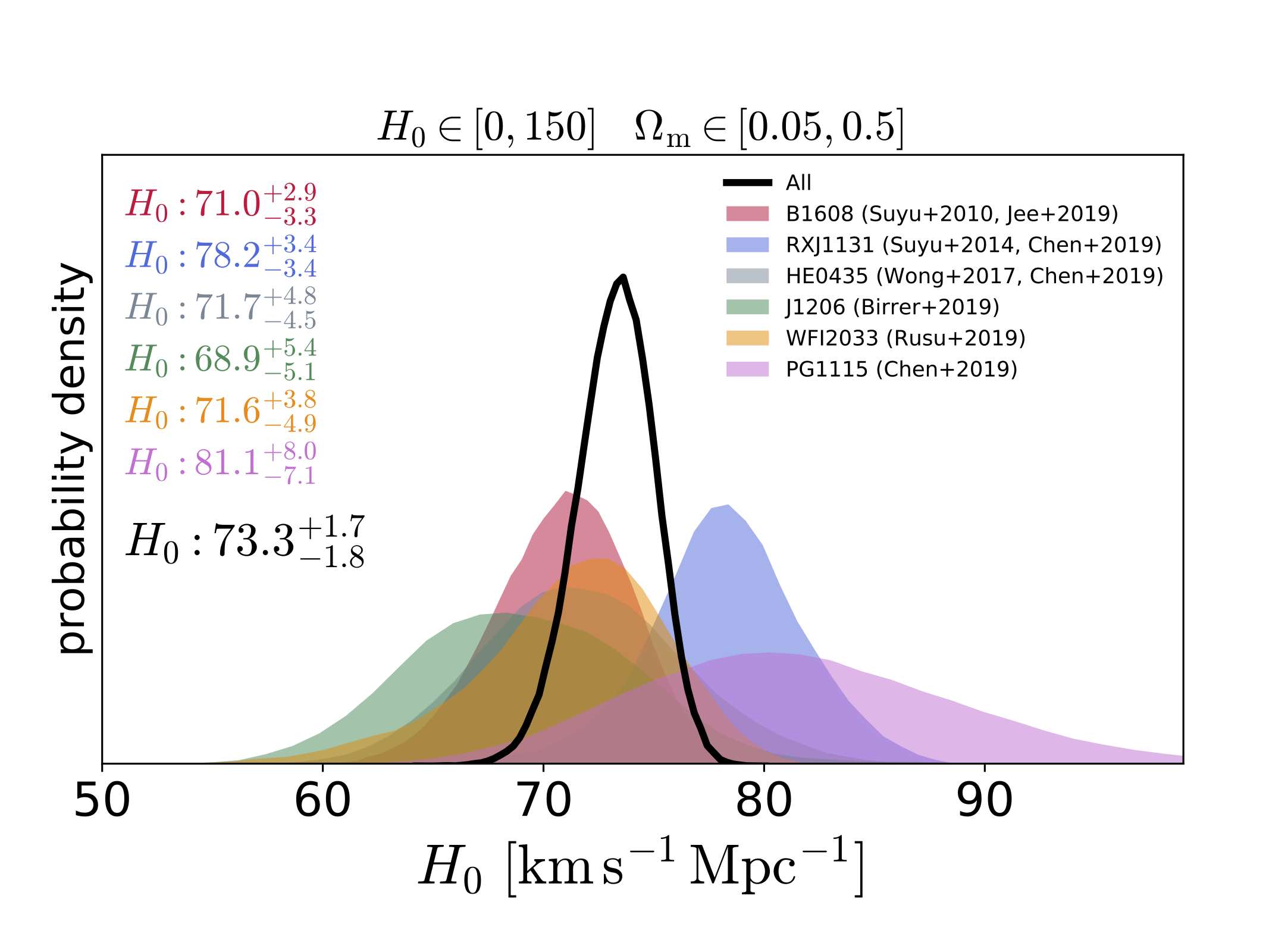
H0LiCOW XIII. A 2.4% measurement of H0 from lensed quasars: 5.3σ tension between early and late-Universe probes
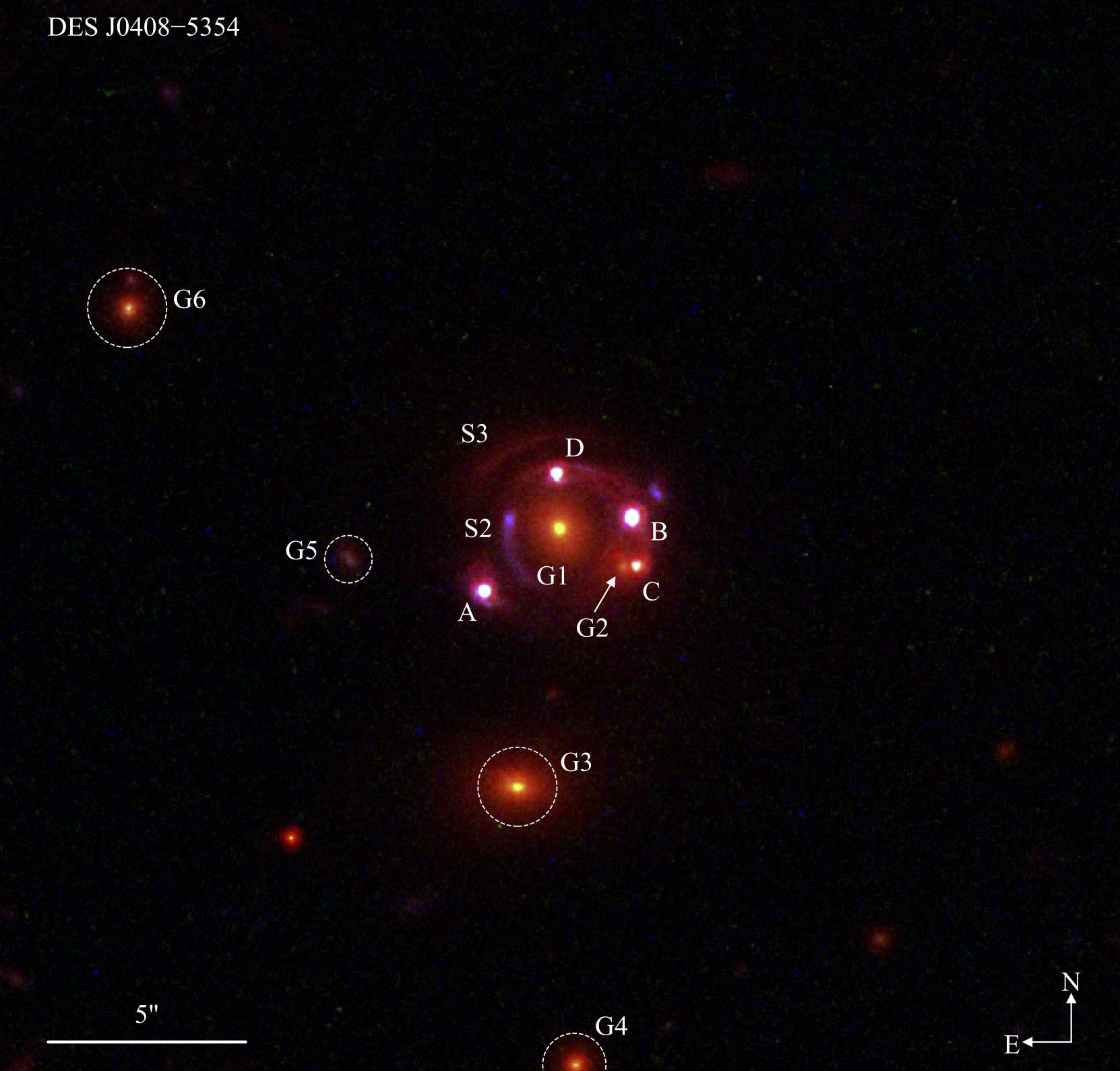
STRIDES: A 3.9 per cent measurement of the Hubble constant from the strong lens system DES J0408-5354

H0LiCOW - IX. Cosmographic analysis of the doubly imaged quasar SDSS 1206+4332 and a new measurement of the Hubble constant

The mass-sheet degeneracy and time-delay cosmography: analysis of the strong lens RXJ1131-1231
Measuring the properties of dark matter
The physical nature of the most common type of matter in our universe is still unknown and its potential
particle physics nature remains unconfirmed to date. Although a direct or indirect detection of dark
matter is missing, we can constrain its physical nature by quantifying its gravitational imprint on our universe.
Gravitational lensing probes the total matter distribution and as such provides a unique window into the dark sector.
I am using statistical approaches to quantify the imprint of dark matter in gravitational lenses.
During my PhD, I was using Hubble Space Telescope imaging data to constrain the thermal relic mass of
dark matter Birrer et al. 2017, JCAP 05, 037.
Since moving to UCLA, I worked in a team to extend the statistical approach to multiple lensed quasar flux ratios
Gilman, Birrer et al. 2018, MNRAS 481, 819,
Gilman, Birrer et al. 2019, MNRAS 487, 5721,
resulting in tight constraints on the dark matter warmth Gilman, Birrer et al. 2019, MNRAS submitted,
and constraints on the mass-concentration relation of low mass dark matter halos
Gilman, incl Birrer et al. 2019, MNRAS submitted.
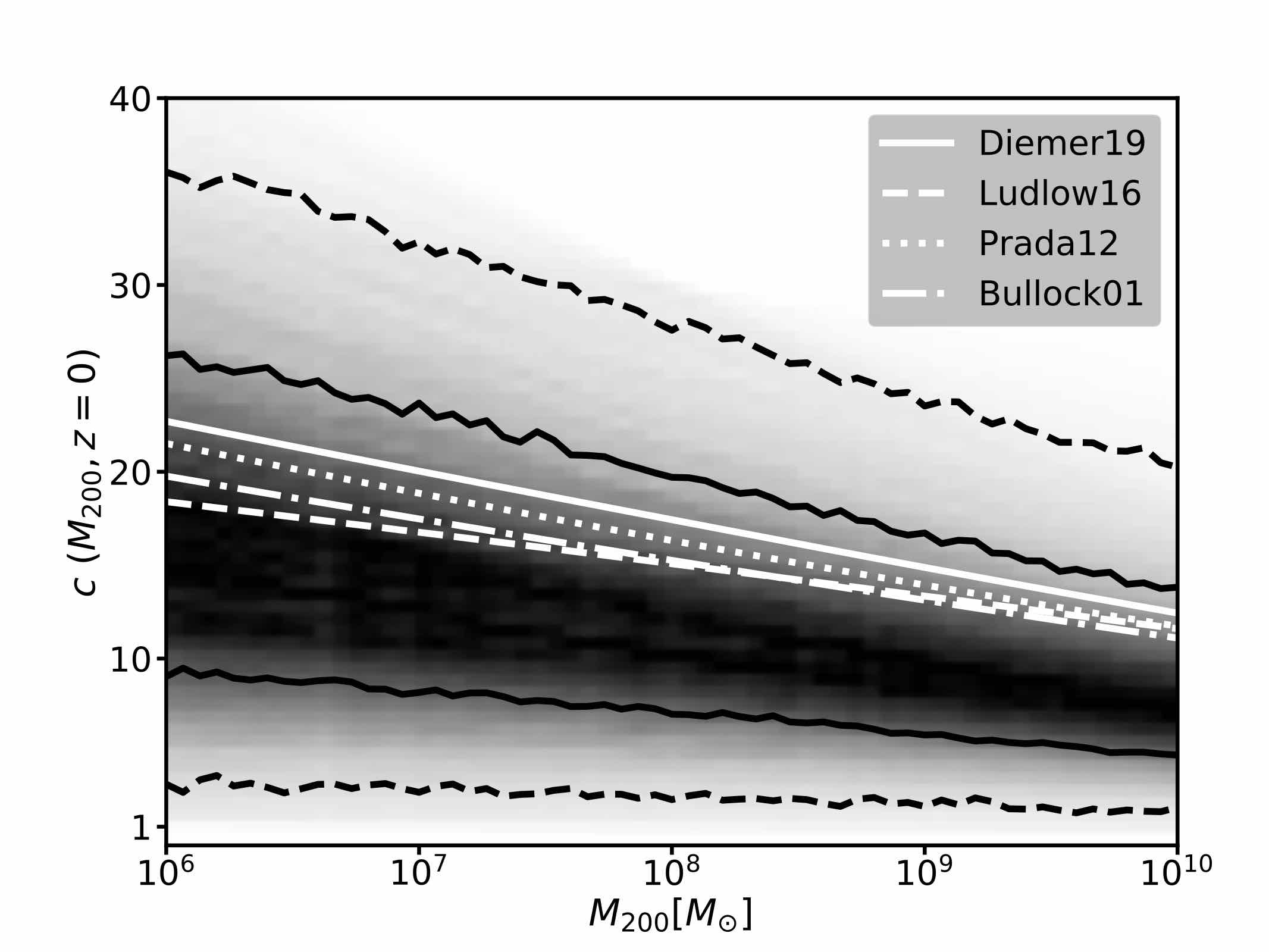
Constraints on the mass-concentration relation of cold dark matter halos with 11 strong gravitational lenses
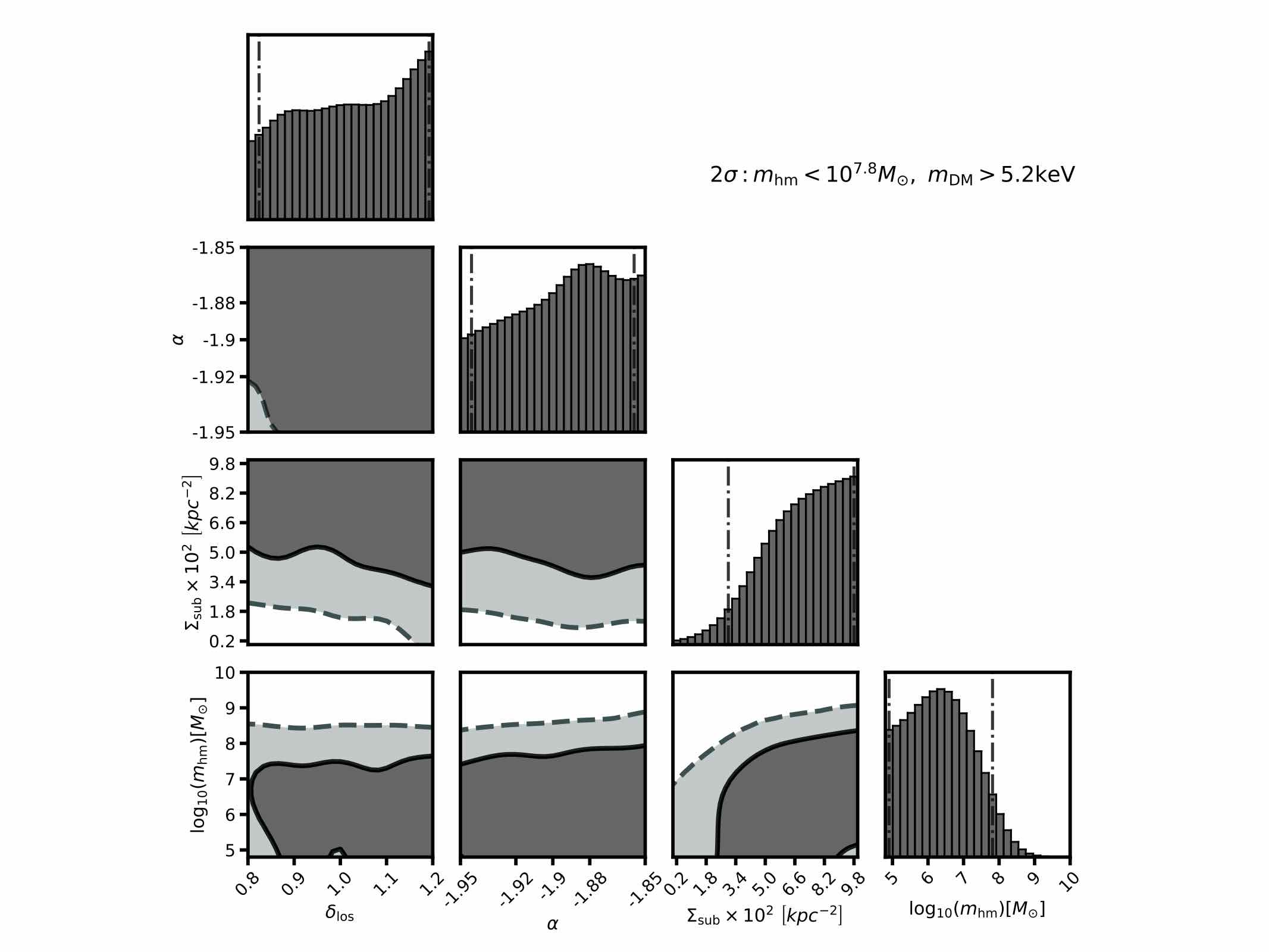
Warm dark matter chills out: constraints on the halo mass function and the free-streaming length of dark matter with 8 quadruple-image strong gravitational lenses

Probing dark matter structure down to 107 solar masses: flux ratio statistics in gravitational lenses with line-of-sight haloes

Probing the nature of dark matter by forward modeling flux ratios in strong gravitational lenses

Lensing substructure quantification in RXJ1131-1231: a 2 keV lower bound on dark matter thermal relic mass
Understanding the co-evolution of dark matter, galaxies and super-massive black holes
In my first science project, Birrer et al. 2014, ApJ 793, 1, 12,
I merged the phenomenological galaxy evolution model by Lilly et al. 2013
with the hierarchical formation of dark matter structure. The semi-analytical model allows to
self-consistently model the galaxy-dark matter halo connection through cosmic time and reproduces
the major evolutionary trends in the galaxy population as well as in the halo population in the full
cosmological context. I am involved in studies that probe the connection between supermassive black holes and the host halo at high redshift
Ding incl. Birrer et al. 2019,
Silverman incl. Birrer et al. 2019.

A Simple Model Linking Galaxy and Dark Matter Evolution
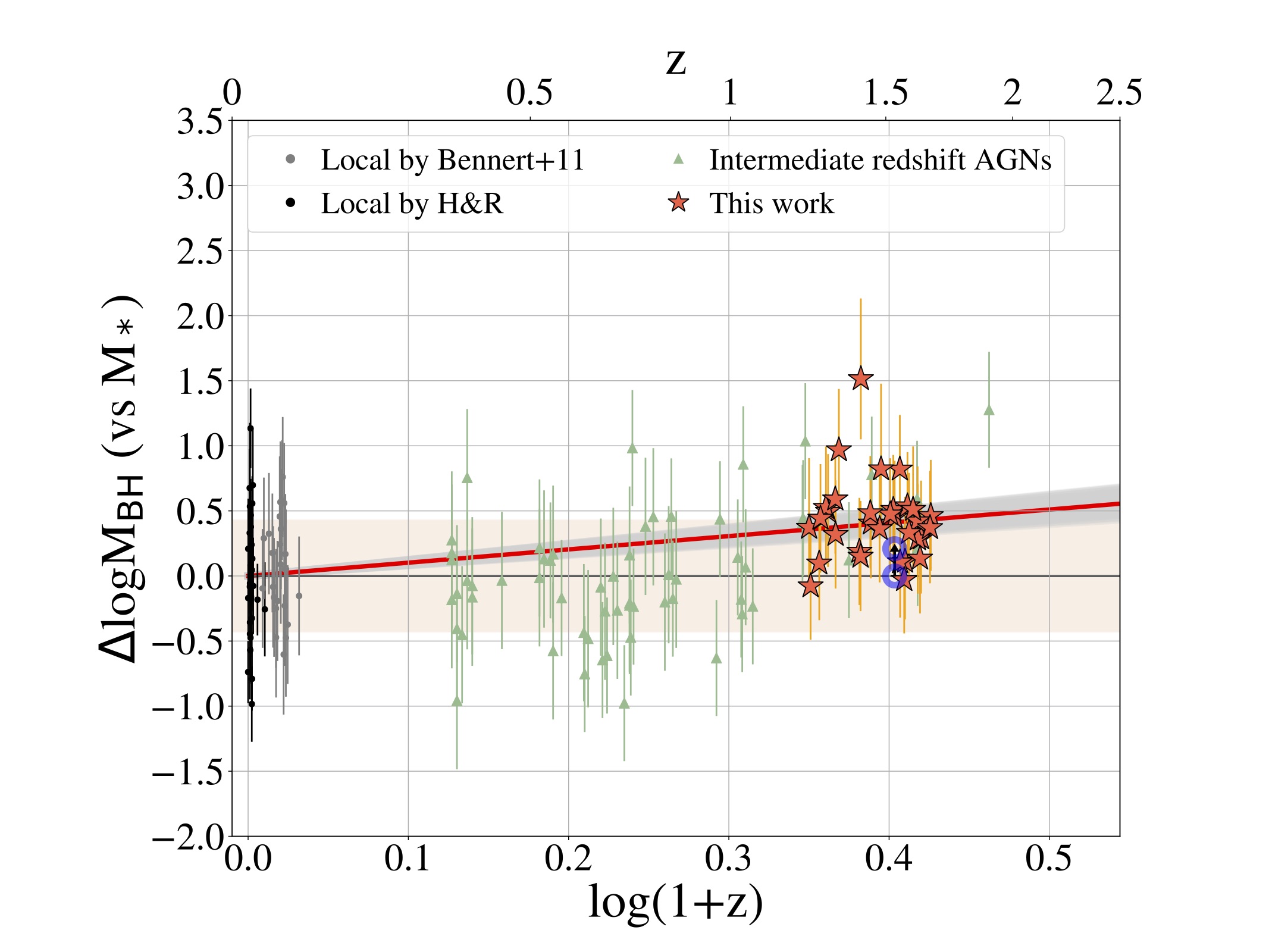
The mass relations between supermassive black holes and their host galaxies at 1 < z < 2 with HST-WFC3

Where do quasar hosts lie with respect to the size-mass relation of galaxies?
Exploring new ways to measure the Universe's fundamental properties
Gravitational lensing occurs along the entire path of light, from its emission to the detector. Although the major contribution in the strong lensing regime comes from one single deflector (a galaxy, galaxy group or cluster), the effect of the line of sight can significantly impact observables and thus needs to be taken into account.
In Birrer et al. 2017, JCAP 04, 049, we introduced a practical approach to account for multi-plane weak distortion effects in the modelling paired with a galaxy halo rendering framework.
The information imprinted in the observables from the line of sight can, in turn, also be used as a cosmological probe. In Birrer et al. 2018, ApJL 852, 1, L14 we proposed using Einstein rings to measure cosmic shear. This approach is complementary to the standard statistical measurement of galaxy distortions.

Cosmic Shear with Einstein Rings

Line-of-sight effects in strong lensing: putting theory into practice
Developing state-of-the-art analysis methodology
To enable the science I am pursuing, we developed a new strong lensing modelling approach with basis sets, Birrer et al. 2015, ApJ 813, 2, 102.
In a next step, we made a public release of the software package in Birrer & Amara 2018.
I make a big effort in facilitating the distribution and use of the software through packaging, modular built up, documentations and example use cases.
My tools are now in wide use for generating simulations for neural network lens finding and modeling, reconstruction of sources that are lensed in galaxy clusters
and even for initially unexpected science cases, such as the decomposition of quasars and its host galaxy at high redshift Ding incl. Birrer et al. 2019.

lenstronomy: multi-purpose gravitational lens modelling software package

Gravitational Lens Modeling with Basis Sets
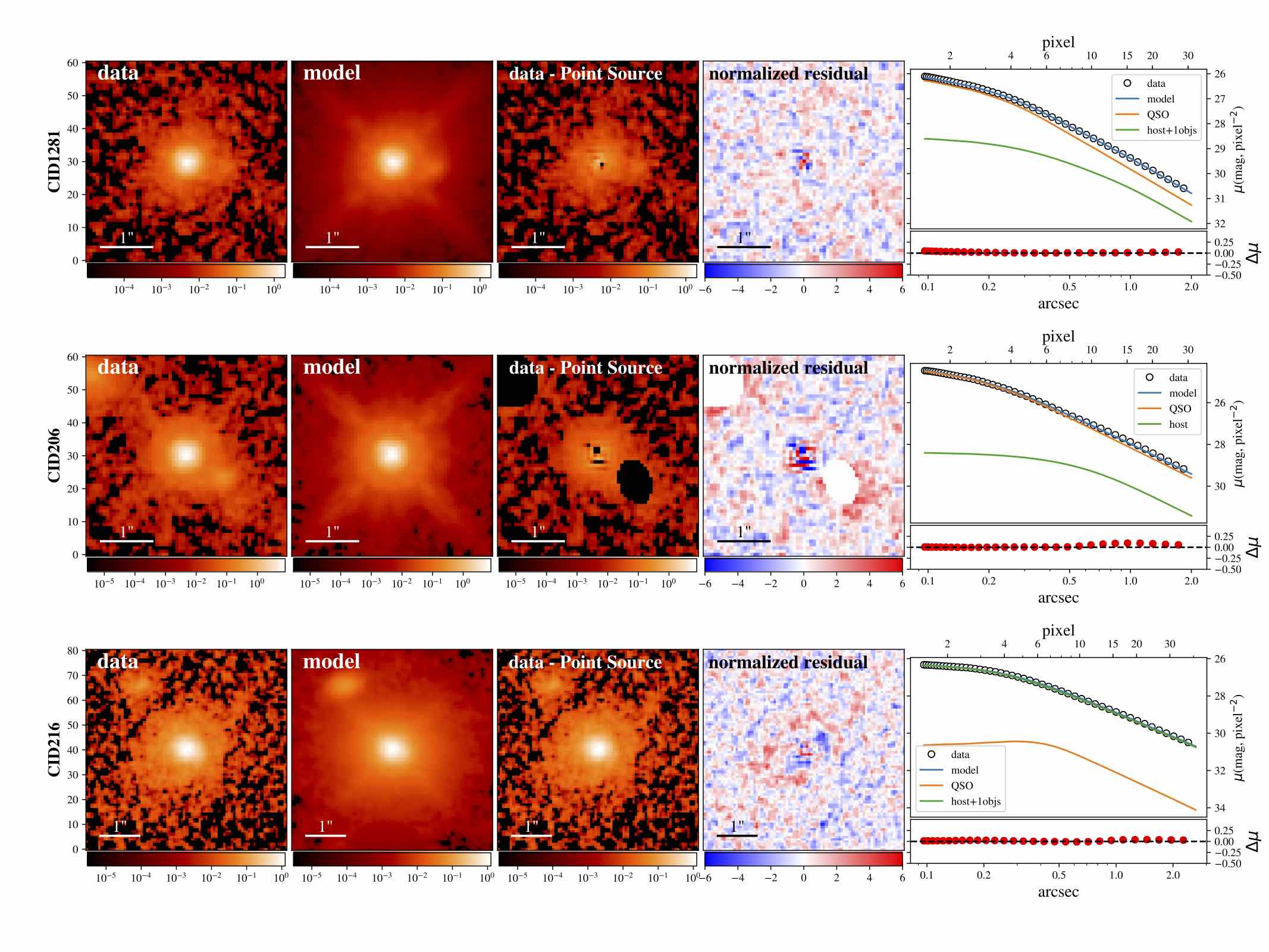
The mass relations between supermassive black holes and their host galaxies at 1<z<2 with HST-WFC3







